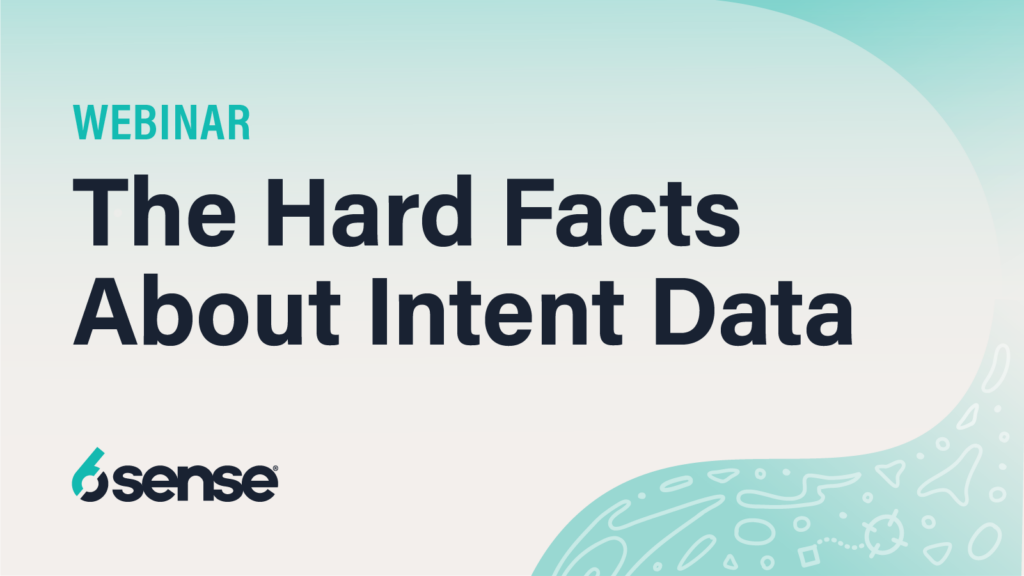Data has become a ubiquitous buzzword in B2B marketing, to the point that it’s almost become meaningless: “Data-driven” this, “data-powered” that. But it’s important to recognize data as a critical asset that can make or break marketing efforts.
Without data, marketing teams are operating in the dark. They may have a general understanding of their target audiences, but without the insights data provides, they’re left relying on intuition alone.
This is where marketing analytics comes into play. It’s the key that unlocks the power of data-driven decision making. It goes beyond simply collecting data — it’s about interpreting data in a way that drives action and leads to tangible results. By using marketing analytics, marketers can:
- Understand customers on a deeper level
- Identify patterns and trends
- Uncover valuable insights to shape marketing strategies
Let’s get into it.
What is Marketing Analytics?
Marketing analytics is the practice of measuring, managing, and analyzing data to gain insights into marketing performance. It involves collecting and interpreting data from various marketing channels and touchpoints to:
1. Understand customer behavior
Data gathered from web traffic, engagement, keywords, and other sources gives marketing teams insight into customer preferences, interests, and buying patterns.
Example: Acme Corp. operates a B2B e-commerce store. Through marketing analytics, Acme’s marketing team discovers a portion of potential clients abandoning their orders during the checkout process. The team can implement strategies like cart abandonment emails and simplified checkout processes to improve conversion rates.
2. Measure campaign performance
Track key metrics like conversion rates, click-through rates, and customer acquisition costs to determine campaign effectiveness.
Example: Marketers at Acme Corp. run digital advertising campaigns across multiple channels. By evaluating engagement and performance of each ad, the team identifies which platforms and content generate the most conversions — and allocates its budget accordingly.
3. Optimize marketing ROI
Data analysis is used for identifying underperforming channels and target audience segments that yield the highest ROI, and refining messaging that resonates.
Example: Acme Corp. runs A/B tests for its email campaigns. The marketing team can analyze and compare open rates, click-through rates, and conversion rates to identify the most effective subject lines, content, and calls to action.
Why Use Marketing Analytics?
Diving into the depths of data (say that 10 times fast!), marketers uncover insights that provide benefits like:
- Better customer understanding: Get valuable insights into customer preferences, needs, and buying behaviors from various sources like website traffic and social media engagement.
- Data-driven decision making: Make informed choices based on real insights, rather than relying on guesswork or intuition. This leads to more effective strategies and better resource allocation.
- Improved campaign performance: Track key metrics like conversion rates and customer acquisition costs — allowing for continuous optimization and the ability to maximize the impact of marketing efforts.
- Optimized resources: Know which channels, campaigns, and tactics are generating the best results to allocate budget, time, and efforts more effectively.
- Competitive advantage: Identify trends and opportunities in untapped market segments, discover new channels for customer acquisition, and develop innovative strategies to gain a competitive advantage.
Marketing Analytics Tools
A quick Google search of “marketing analytics tools” will produce a list of results like this:
- #1 Marketing Analytics Tool
- Top 10 Marketing Analytics Software Tools
- Marketing Analytics Tools for Smart Marketers
- Learn About Our Amazing Marketing Analytics Tool! (We’ll Just Need Your Name, Email Address, Phone Number, Job Title, Your Dog’s Name, and Your SSN)
Which leaves marketing leaders thinking, “Where the #&$%! do I start?”
Start with this list of popular solutions that offer a range of features and capabilities:
- Google Analytics: A free web analytics tool that provides comprehensive insights into website traffic, user behavior, and conversion tracking. It offers features like audience segmentation, goal tracking, and customizable reporting. Google Analytics also integrates with other Google products.
- Adobe Analytics: A robust analytics platform that offers advanced features for tracking customer data across multiple channels. It provides real-time insights, predictive analytics, and segmentation capabilities. Adobe Analytics integrates with other Adobe Marketing Cloud Solutions.
- HubSpot Analytics: A comprehensive tool that offers a wide range of features for tracking marketing performance. It provides insights into website traffic, lead generation, email marketing, social media, and more. HubSpot Analytics also offers customizable dashboards and reporting.
- Salesforce Marketing Cloud: A marketing analytics suite that tracks and analyzes customer interactions across various channels. It provides features such as email marketing analytics, social media monitoring, campaign tracking, and lead scoring. Salesforce Marketing Cloud integrates with other Salesforce products.
- IBM Watson Analytics: An AI-powered platform that offers capabilities for data exploration, predictive analytics, and data visualization. It provides features such as natural language processing, automated data preparation, and predictive modeling.
A quick, shameless 6sense plug: By using advanced data science and machine learning, 6sense provides unparalleled insights into B2B buyer intent — allowing marketers to prioritize their efforts and drive revenue growth. 6sense’s predictive capabilities help organizations identify and engage with target accounts at the right time with the right message.
Comparing Marketing Analytics Tools
When comparing different marketing analytics suites, it’s important to consider the specific needs and budget of your business. Some tools offer free versions or basic plans with limited features, while others require a subscription or offer tiered pricing based on usage and functionality.
Paid marketing analytics suites typically include access to advanced features, dedicated customer support, and integration with other marketing tools. They also often provide more robust reporting capabilities, customization options, and scalability to accommodate growing businesses.
However, the cost of these solutions can be a disadvantage for small businesses or those with limited budgets. Additionally, some tools may have a steeper learning curve or require technical expertise to fully utilize their capabilities.
The Power of Analytics in B2B Marketing
B2B marketing analytics is like a North Star, guiding marketers to success with data-driven brilliance and critical insights into their target audience’s behavior, preferences, and pain points.
Analytics offers a panoramic view of the buyer’s journey, from initial awareness to final purchase, allowing marketers to refine their strategies. Whether it’s optimizing content for specific touchpoints, fine-tuning targeting criteria, or crafting content that resonates with decision-makers, analytics empowers marketers to engage buyers with more confidence and precision.






